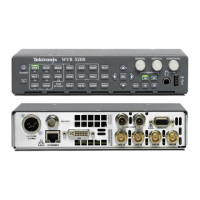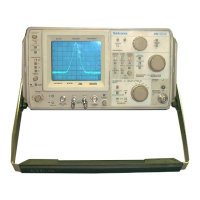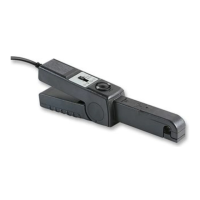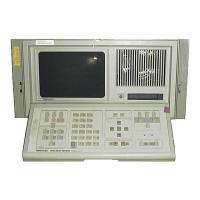Theory of Oper ation
Audio Processing
The audio options use an FPGA to route the audio input into two DSP chips whose
main function is to calculate the peak va lues for the selected meter ballistics
(response characteristics).
The audio data has two paths to the display. On one path, peak values are sent to
the c ontrol processor which then plots the bar displays. On the second path, raw
data samples are sent to the waveform processing engine which interpolates and
plots them
to generate the lissajous display.
Audio Inputs
There are
three basic audio input paths: AES, analog, and embedded. AES inputs
are accepted at rates up to 192 kHz. All input data rates are resampled at 192 kHz
before processing by the DSPs.
Analog inputs are digitized at 48 kHz and then go through the same path as the
AES inputs.
The embedded audio path starts at the DSY FPGA. First the audio samples are
extracted from the serial digital video data using a 12.288 MHz oscillator and sent
to the audio board. At the audio board, the streams are multiplexed into the AES
decoders and then follow the same path as the AES data. The user can choose to
have the de-embedded audio output on the AES B port.
Audio Outputs
There are two audio outputs, analog and AES. Both outputs always follow the
sou
rce that is c urrently selected for the audio bar display. The analog outputs can
come from any input. The selected signal output f rom the FPGA, is converted
from digital to analog and then sent as a balanced output to the rear panel Dsub
connector.
The AES outputs are available with any input. They can serve as an active
loop-through if the input is AES, a de-embedder if the input is embedded, or an
A/D converter if the input is analog.
Option EYE/PHY
Options EYE and PHY provide the following features:
Eye pattern display
Jitter waveform display
1
Jitter readout
2–6 WVR6020, WVR7020, and WVR7120 Waveform Rasterizers Service Manual
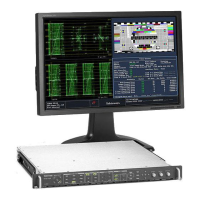
